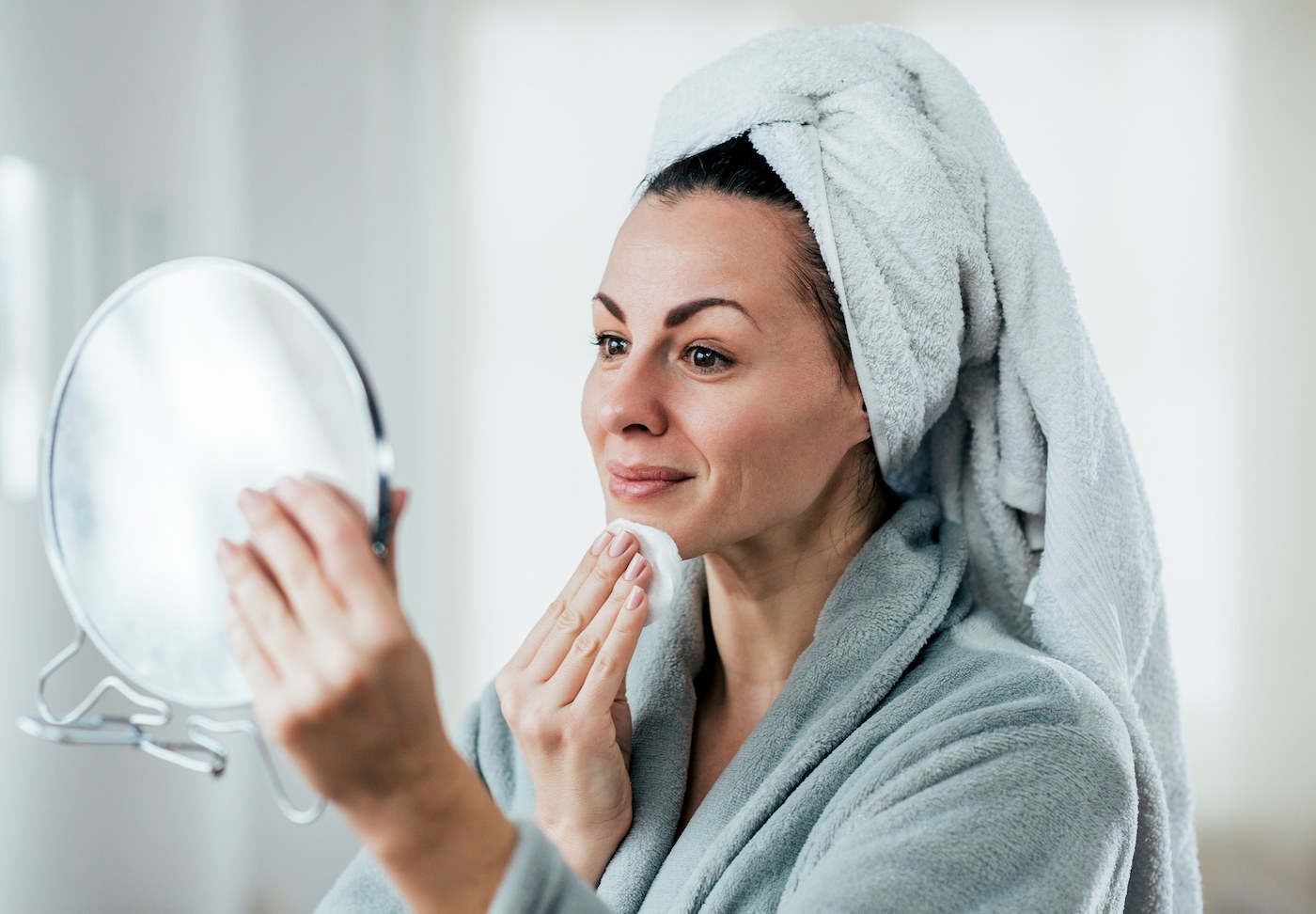
September 30, 2019 at 10:19PM by CWC
Now that pictures of football Sundays and apple picking have begun to dominate our Instagram feeds, it means that dehydrated skin season is upon us. As the weather changes, so too do the needs of our skin: We need all the hydration we can get. As far as getting our faces nice and lubed up in order to combat what the cold air is doing to them, we generally have two options—moisturizer and oil. But which one reigns supreme in the battle against dehydrated skin? The answer, to put it simply, is… both.
“A cream contains more hydration because they are composed of both oil and water,” says board-certified dermatologist Rachel Nazarian, MD. On the other hand, she explains, oils “work best to ‘lock in’ moisture.” So using them together is like a double whammy for your dewiest complexion. To understand how this works, it’s important to know the difference between “dry” and “dehydrated” skin, terms that are often used interchangeably but actually mean different things. Dry skin is a skin type, meaning you’re born with it, while dehydrated skin is a skin condition, meaning that it’s impacted by things like stress, products, and yes, the environment. In order to keep your skin from experiencing either this time of year, you’re going to want to address both.
“Creams are better at penetrating skin because they are partly water-based, and can deliver ingredients that improve the ability of skin to maintain moisture, and are thus more of a humectant, meaning they can draw water in,” says Dr. Nazarian. So after you cleanse your skin and apply your a.m. or p.m. serums, slather on a moisturizer packed with ingredients like hyaluronic acid and ceramides, which your pores will drink right up. Then comes time for your oil. “Oils are really better at sealing in moisture due to their occlusive nature—they prevent the evaporation of hydration from skin to the environment,” explains Dr. Nazarian. Thanks to the fact that oils are emollients, they’ll create a barrier on your skin to lock in all that hydrating goodness from your moisturizer.
“A combo of both is truly best,” confirms Natalie White, a skin therapist at Heyday Beverly. She notes that using an oil without a moisturizer can potentially do more harm than good, because your skin may become reliant on it and begin to either under or over-produce its own natural oils, leading to dryness or excessive oiliness. If you don’t love the idea of layering oil on top of your moisturizer, though, she suggests mixing a drop of it into the cream to “enhance your moisturizer and target specific skin conditions.” Or if you really hate moisturizer and are exclusively team facial oil all the way, board-certified dermatologist and founder of Visha Skincare, Purvisha Patel, MD suggests using your cream when your skin is wet so that there’s at least some water present for it to trap beneath your skin.
But for true top-to-bottom hydration, you really should be doubling up. My personal favorite combo for this time of year? Drunk Elephant Lala Retro Whipped Moisturizer ($60), which was just reformulated with ceramides to up its hydration factor even more, followed by Cle de Peau Beauté Radiant Multi-Repair Oil ($168). This weather doesn’t stand a chance.
Whipped Moisturizer ($60), which was just reformulated with ceramides to up its hydration factor even more, followed by Cle de Peau Beauté Radiant Multi-Repair Oil ($168). This weather doesn’t stand a chance.
ADVERTISEMENT
ADVERTISEMENTKate Spade Autumn/Winter Sale |
BTW, if you’re thinking of using coconut oil on your face for moisture, here’s what to know. And for some added hydration from your face cream, this is what to look for in a moisturizer.
Author Zoe Weiner | Well and Good
Selected by CWC
ADVERTISEMENT
ADVERTISEMENTUp to 30% off Gift Sets |






